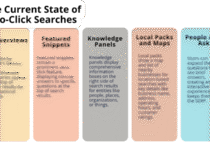AIO Implementation Costs and Expected ROI for 2025
When finance leaders evaluate all-in-one (AIO) platform investments, they’re not just buying software. They’re betting on transformation. The stakes are high: recent Forrester research shows that comprehensive AIO implementations can cost upwards of $832,000 over three years, yet deliver returns exceeding 123% for organizations that execute strategically.
The challenge isn’t whether AIO platforms deliver value. It’s understanding the true investment required and building a bulletproof business case that accounts for both obvious and hidden costs. For growth-stage SaaS companies and mid-market e-commerce brands, getting these numbers right can mean the difference between transformative growth and budget catastrophe.
Key Takeaways
- AIO implementation costs extend far beyond licensing fees with technology infrastructure consuming 40-60% of budgets, professional services 25-35%, and internal resources including training 15-25% of total investment
- Well-executed AIO implementations deliver 123% ROI over three years according to Forrester research, with payback periods typically ranging from 12-36 months depending on organizational complexity and readiness
- Hidden costs can increase budgets by 15-25% including data migration, legacy system decommissioning, extended training programs, and change management resistance that organizations frequently underestimate
- Implementation costs vary dramatically by organization size ranging from $10,000-$50,000 for small businesses to over $1,000,000 for enterprises, with timeline and ROI expectations scaling accordingly
- Phased rollout strategies reduce risk while maintaining ROI potential by combining core platform deployment with staged feature rollouts, allowing organizations to capture early wins and build adoption momentum
TABLE OF CONTENTS:
Understanding the AIO Implementation Investment Landscape
AIO implementation costs vary dramatically based on organizational complexity, chosen platform, and deployment strategy. The financial commitment extends far beyond initial licensing fees, encompassing integration work, training programs, change management, and ongoing support structures that can triple your initial budget estimates.
Three primary cost categories define most AIO implementations: technology infrastructure (40-60% of total budget), professional services and implementation support (25-35%), and internal resource allocation including training and change management (15-25%). Understanding this breakdown helps finance teams allocate resources appropriately and avoid the common trap of underestimating human capital requirements.
| Organization Size | Typical Cost Range | Implementation Timeline | Expected ROI Timeframe |
|---|---|---|---|
| Small Business (10-50 employees) | $10,000 – $50,000 | 2-4 months | 6-12 months |
| Mid-Market (50-500 employees) | $50,000 – $150,000 | 4-8 months | 12-18 months |
| Enterprise (500+ employees) | $150,000 – $1,000,000+ | 8-18 months | 18-36 months |
Budget Planning Benchmarks for 2025
Market data from 2025 reveals significant variations in AIO platform costs across industries and deployment models. Current industry analysis indicates that basic all-in-one ERP platforms for SMBs typically range from $10,000 to $150,000 for implementation, while large enterprises frequently exceed the $1 million threshold for comprehensive deployments.
The cost spectrum reflects fundamental differences in organizational complexity rather than simple employee counts. Companies with multiple locations, complex regulatory requirements, or extensive legacy system integrations should expect investments at the higher end of their size category. Conversely, organizations with streamlined processes and modern existing infrastructure often achieve successful implementations at budget levels 20-30% below market averages.
“The most successful AIO implementations we’ve seen focus on total cost of ownership rather than upfront expenses. Organizations that budget for comprehensive change management and user adoption programs consistently achieve faster ROI realization and higher long-term satisfaction rates.” , Enterprise Architecture Research, 2025
Expected ROI and Payback Analysis
ROI expectations for AIO implementations have evolved significantly as organizations better understand the compound benefits of integrated platforms. Forrester’s Total Economic Impact analysis demonstrates that well-executed AIO deployments can achieve 123% ROI over three years, with payback periods typically ranging from 12 to 36 months depending on implementation scope and organizational readiness.
The most compelling ROI drivers extend beyond direct cost savings to include productivity improvements, reduced error rates, and enhanced decision-making capabilities. Organizations frequently report 20-40% improvements in process efficiency, alongside dramatic reductions in manual tasks and data reconciliation requirements. These operational improvements compound over time, creating sustained competitive advantages that justify initial investment costs.
Real-World Success Metrics
Leading organizations across multiple industries have demonstrated the transformative potential of strategic AIO implementations. SimCorp’s enterprise consolidation initiative achieved 134% ROI over three years while saving $7.9 million in legacy license and maintenance fees. The financial services firm also reported 135,200 staff hours saved, valued at $7.2 million in productivity gains.
Microsoft Power Platform implementations showcase even more dramatic results in specific use cases. Enterprise deployments of the low-code AIO environment delivered 224% ROI with payback periods under six months, primarily through accelerated development cycles and reduced IT overhead costs.
Healthcare organizations present particularly compelling ROI scenarios due to the industry’s complex operational requirements. HealthBridge Solutions’ integrated digital platform implementation resulted in 45% improvements in clinical efficiency and 50% reductions in patient wait times, demonstrating how AIO platforms can convert operational improvements directly into measurable financial returns.
Hidden Costs and Budget Considerations
Successful AIO implementations require careful attention to frequently overlooked cost categories that can significantly impact total project budgets. Data migration represents one of the most underestimated expenses, often requiring specialized expertise and extensive testing periods that extend implementation timelines by 20-30%.
Key hidden cost categories include:
- Legacy system decommissioning: Proper data archival and system shutdown procedures
- Extended training programs: User adoption often requires multiple training cycles and ongoing support
- Integration complexity: Connecting AIO platforms with existing tools and workflows
- Customization requirements: Industry-specific modifications and workflow adaptations
- Change management resistance: Cultural transformation costs and productivity dips during transition periods
Organizations that proactively budget for these hidden costs typically experience smoother implementations and faster ROI realization. Finance teams should allocate an additional 15-25% of their primary budget for contingencies and unforeseen integration challenges.
ROI Calculation Framework
Building accurate ROI projections requires a systematic approach that accounts for both quantifiable savings and qualitative improvements. The most effective framework combines direct cost reductions (licensing consolidation, reduced manual labor, elimination of redundant systems) with productivity enhancements and risk mitigation benefits.
Direct savings typically include license fee reductions from consolidated platforms, decreased IT support requirements, and elimination of duplicate data entry processes. Productivity improvements encompass faster decision-making cycles, improved reporting capabilities, and enhanced collaboration across departments. Risk mitigation benefits, while harder to quantify, include improved data accuracy, enhanced security postures, and better regulatory compliance capabilities.
For marketing leaders evaluating AIO platforms, AI-powered optimization strategies can significantly accelerate ROI realization by automating campaign management and improving targeting precision across multiple channels simultaneously.
Strategic Implementation Approaches
Implementation strategy directly impacts both costs and ROI timelines. Phased rollouts typically require 20-30% higher initial planning investments but reduce risk exposure and allow for iterative improvements throughout the deployment process. Big-bang implementations offer faster time-to-value but carry higher risk profiles and require more comprehensive change management programs.
The most successful implementations combine elements of both approaches: core platform deployment in a concentrated timeframe, followed by staged rollout of advanced features and integrations. This hybrid strategy balances speed-to-value with risk management while allowing organizations to capture early wins that build momentum for broader adoption.
Making the Compelling Business Case
Executive buy-in requires clear demonstration of how AIO investments align with broader organizational objectives. The most persuasive business cases focus on competitive advantages rather than purely operational efficiencies, highlighting how integrated platforms enable capabilities that weren’t previously possible with fragmented systems.
Successful business cases typically include three-year financial projections with conservative, realistic, and optimistic scenarios. They address implementation risks directly while demonstrating how proper planning and execution minimize potential negative outcomes. Most importantly, they connect AIO investments to specific business growth objectives and market opportunities that justify the required resource allocation.
For organizations ready to maximize their AIO implementation potential, partnering with specialists who understand both technical requirements and business transformation dynamics can dramatically improve success rates. Work with the leading AI optimization agency to ensure your AIO platform delivers transformative results rather than just operational improvements.
The key to AIO implementation success lies in treating the investment as a business transformation initiative rather than a technology project. Organizations that approach AIO deployments with comprehensive planning, realistic budgeting, and strategic change management consistently achieve the compelling ROI figures that justify their initial investment and position them for sustained competitive advantage.
Ready to turn your AIO investment into that 123% ROI instead of a budget nightmare?
The post AIO Implementation Costs and Expected ROI for 2025 appeared first on Single Grain.

